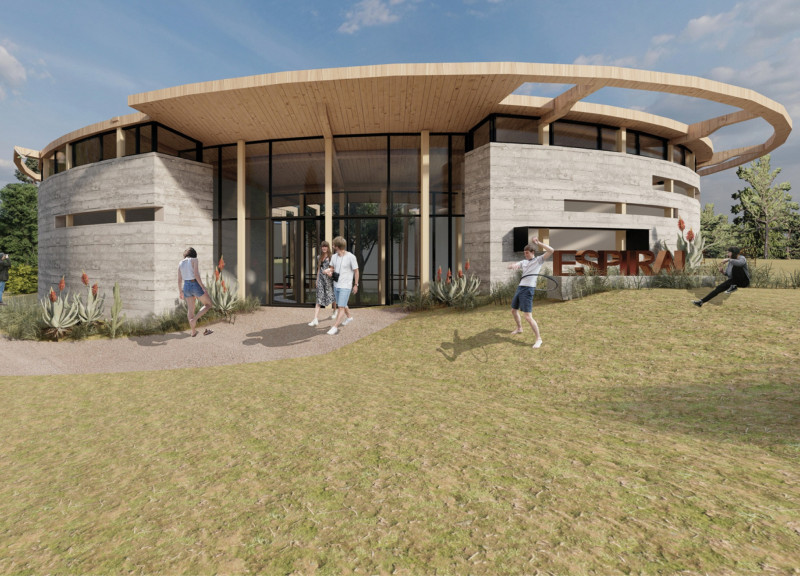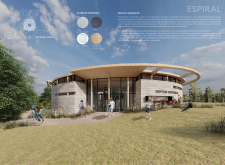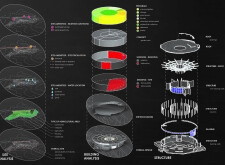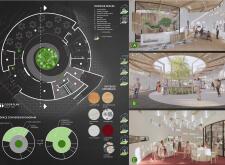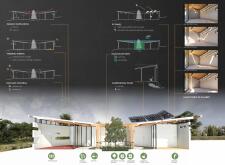5 key facts about this project
The Espiral community center is located in an area that focuses on enhancing social connections and promoting environmental responsibility. The building is a single-story structure designed to operate without air conditioning, relying instead on natural ventilation and passive environmental methods. The design concept is centered around a circular layout, which encourages movement and interaction among visitors while integrating harmoniously with its natural surroundings.
Architectural Concept
The structure's circular form serves an important purpose, facilitating easy access and encouraging community interactions. A central feature of the design is a rainwater harvesting garden, which provides both ecological benefits and a gathering space for people. This garden not only enhances the site's sustainability but also symbolizes the commitment to connecting the community with nature.
Materials and Sustainability
Material choices are a key aspect of the design, including high performance metal, low-e glass, and reclaimed wood slat. These selections are made for their practical benefits as well as their environmental impact. The use of concrete walls offers thermal mass, helping to regulate temperatures inside without relying heavily on energy. This thoughtful selection of materials contributes to a durable structure that aligns with both ecological values and community needs.
Interior Layout and Functionality
The layout features various spaces such as an entrance lobby, gallery/lounge, compost toilet facilities, and areas designated for events and food preparation. The arrangement supports smooth movement throughout the building, allowing for easy access to different areas. The design also includes a secondary entrance and exit to accommodate various user needs, encouraging participation from a broad audience in community activities.
Design Features
Passive ventilation is a central aspect of maintaining comfortable indoor conditions. Roof openings and well-placed walls are designed to encourage natural air circulation, reducing the need for mechanical systems. These elements reflect a commitment to energy efficiency while ensuring a pleasant environment for occupants. The rainwater garden serves as an important design element, enhancing the overall experience while promoting an awareness of environmental sustainability.


